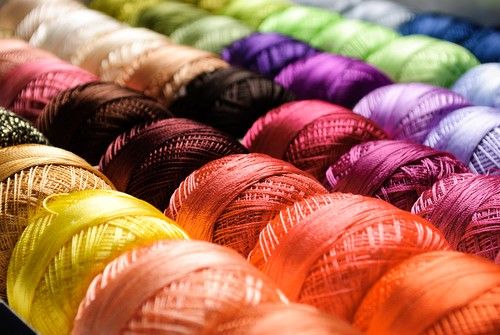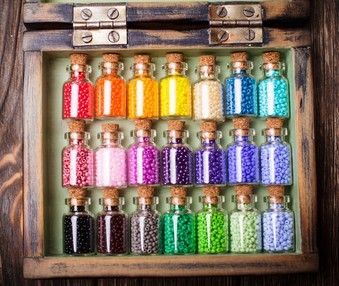 For writers, describing color is both an everyday task and a perpetual challenge. Basically everything we create ends up being black (print) on white (page), so the words we choose to communicate the colors of anything contained in a story are particularly vital. We need to invoke imagery in a reader's mind as they read, and we can't do that if we never share with them what we see in ours as we write.
For writers, describing color is both an everyday task and a perpetual challenge. Basically everything we create ends up being black (print) on white (page), so the words we choose to communicate the colors of anything contained in a story are particularly vital. We need to invoke imagery in a reader's mind as they read, and we can't do that if we never share with them what we see in ours as we write.Employing the basic words for every color -- red, green, blue, yellow, orange, black, white, brown, purple -- are the easiest way to communicate what you want someone to see in a story. Sometimes that may be all you need, too: A red roof. A green door. A purple crayon. But if you use only basic color words, you'll end up with a story that reads like a pile of LEGO blocks looks.
The other end of the color word writing spectrum is using color words that are so elaborate or obscure that they colorblind the reader. I was reading a story last week in which the author described a color using only the word hopniss. I had no idea what that was, so I not only had to look up what the word meant, I then had to go search for an image of it before I saw the color. I don't mind doing this once, as there is no way in the world I can know what every plant on the planet looks like. If I have to do it ten times before I read the end of the first chapter, however, I'm probably not going to read the rest of the book.
 So how do you avoid using color words that are too simple or too obscure to keep the reader engaged? One way is to exercise and beef up your own color vocabulary by creating charts and word lists. Haul out your basic color words, and begin collecting paint chips, fabric swatches and other visual samples for one of the words. Pay attention to how others name them as inspiration, and then begin a list with your own descriptors. Keep in mind terms that are universal enough for others to imagine. While not everyone knows what hopniss is, I'll bet nearly every reader you reach will recognize something you describe as the color of elephant hide, a fresh bruise, or a sunset cloud.
So how do you avoid using color words that are too simple or too obscure to keep the reader engaged? One way is to exercise and beef up your own color vocabulary by creating charts and word lists. Haul out your basic color words, and begin collecting paint chips, fabric swatches and other visual samples for one of the words. Pay attention to how others name them as inspiration, and then begin a list with your own descriptors. Keep in mind terms that are universal enough for others to imagine. While not everyone knows what hopniss is, I'll bet nearly every reader you reach will recognize something you describe as the color of elephant hide, a fresh bruise, or a sunset cloud.Tomorrow we'll wrap up color week by putting together a color notebook in which you can keep your charts, word lists and color ideas for future reference. In the meantime, what's the most interesting color description you've ever encountered? Let us know in comments.
Images credit: oksixx

It isn't much, but it was "periwinkle wainscoting blue". I was having a dream that slowly developed into a cozy mystery, & one of the 'characters' used this expression. O_o
ReplyDelete